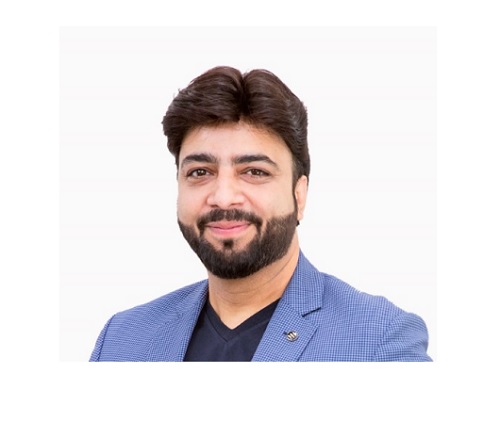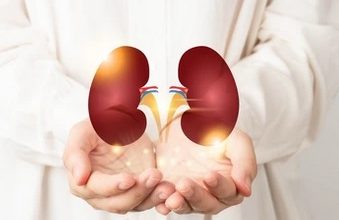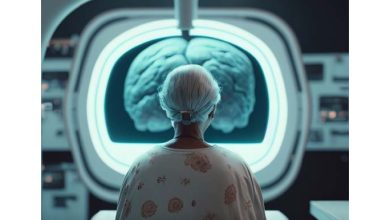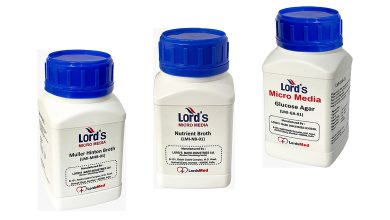Technology-A game changer for healthcare industry

There is still a certain degree of apprehension about adopting new technologies. Vinay K Mayer,
Director – Marketing Research & Consulting, Asia Research Partners
The healthcare industry has seen a lot of changes in the last decade. While the growing population and technology are two things that are constantly changing, the way people interact with the industry is evolving as well. The relationship between health and medicine is changing, as well. People are looking for less invasive treatments and better quality of life. People are also looking for more personalised healthcare that is more affordable than ever before. This is driving the need for more healthcare services and more accessible healthcare options. Companies within the healthcare industry are constantly striving to improve their services and make them more accessible for those who need them the most. After the covid outbreak, the dynamics of healthcare have changed tremendously. It’s now more important than ever to have a strong health system in place that will be able to withstand any sort of disaster/catastrophic event. Technology plays a huge role
in our current healthcare industry by providing resilient solutions like immunisation programmes and virtual on-demand services which help people protect their health in more ways than one. Hopefully, this solution attracts many new customers as the world adjusts to ‘The New Normal.’
Telehealth – A growing market segment with big possibilities
One of the biggest challenges to the healthcare system is the lack of communication between healthcare providers and patients. The average patient has to visit at least five healthcare providers before getting a diagnosis and treatment. Moreover, many patients still don’t know what treatment options are available to them. This makes every hospital stay inconvenient and expensive for both patients and care providers. However, the future is bright for telehealth. Telehealth is the delivery of healthcare services and real-time clinical data remotely using electronic communication devices and information technology. Telehealth is a great tool for improved patient care and better management of chronic conditions. The shift from hospital-to-home care shook up the existing care delivery model, prompting many clinicians and health systems to adopt telehealth and virtual care models. They have experienced tremendous benefits from these changes.
In near future, we can also expect that medical providers will be among the first to enhance and formalise training programmes to research and promote telehealth best practices to their clinical teams.
Telemedicine: Bridging the Gap of Doctor-Patient Ratio
Telemedicine has made great strides in the healthcare industry. India has over 1.39 billion citizens, but it lacks sufficient healthcare practitioners and hospitals to meet their needs. Telemedicine can effectively mitigate this issue by enabling patients to consult doctors from the comfort of their own homes via the internet in such cases. Data capturing in healthcare. The recent drive to digitise medical records has made access to personal health information much easier; however, it has also created a flood of new data for hospitals. Unfortunately,
during the recent pandemic, hospitals struggled to manage the number of patients they had to treat while also managing a flood of information. One way that hospitals can make managing all of this data easier is by setting up a centralised process for keeping organised and by making sure that specific departments communicate with one another effectively. An example would be to set up procedures for how patients should be fully documented so as not to cause any redundancies in terms of record-keeping with the key areas being inventory management, patient management, and asset management. Global Healthcare Automatic Identification and Data Capture (AIDC) market size is estimated to reach $25.31 billion by 2028. However, while the adoption of (AIDC)-enabled devices has increased, there is still a certain degree of apprehension about adopting new technologies. Combined with the high costs of some AIDC devices, this hinders the growth of the automatic identification and data capture market in healthcare.
Embracing AI
Thanks to AI-powered technology, healthcare is changing for the better. We have everything from virtual health assistants and chatbots, which can now be used to detect rare diseases to applications that can predict a patient’s condition and needs to be based on their symptoms and history. Chatbots are computer programmes designed to automate conversations between patients and doctors through instant messaging (IM) software. These AIdriven programmes are not only less expensive than traditional healthcare systems but also eliminate the need for paperwork and make it unnecessary for patients to visit medical facilities as frequently.
Hospitals will also rely more than ever on artificial intelligence powered infection prevention and control (IP&C) programmes to better monitor patients in real-time and identify signs of infection early so that early clinical intervention can be administered.
Virtual simulation and online education
In 2022, a new and innovative approach to learning in the nursing field will be popular. The implementation of virtual simulations and online learning has allowed schools to cut costs in areas such as training sites again because they can remove traditional roadblocks such as a lack of physical space for hands on training. Through this technology’s flexible solutions for both students and faculty members, schools are more than willing to adopt this technology for their classes.
In summary, healthcare holds promise for patients, caregivers, and medical providers alike. Technology continues to expand its importance in the medical world. We can use technology to better ourselves as people; we have access to data that allows us to learn more about our health; has led professionals and clinical staff alike to demand flexibility when it comes to scheduling and location; enables caregivers from all over the world can collaborate on a singular platform; grants new ways of accessing reliable information on mechanisms behind illnesses/diseases along with other research; and helps us develop a holistic approach which involves interacting with medical testing equipment to perform diagnostics tests more easily.




